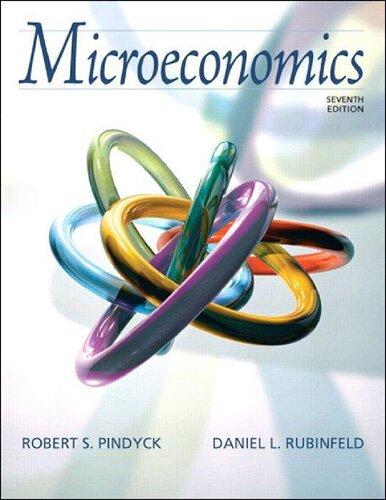1.10. As the owner of the only tennis club in an isolated wealthy community, you must decide...
Question:
1.10. As the owner of the only tennis club in an isolated wealthy community, you must decide on membership dues and fees for court time. There are two types of tennis players. “Serious” players have demand Q1 = 10 − P where Q1 is court hours per week and P is the fee per hour for each individual player. There are also “occasional” players with demand Q2 = 4 − 0.25P Assume that there are 1000 players of each type. Because you have plenty of courts, the marginal cost of court time is zero. You have fixed costs of $10,000 per week. Serious and occasional players look alike, so you must charge them the same prices.
a. Suppose that to maintain a “professional” atmosphere, you want to limit membership to serious players. How should you set the annual membership dues and court fees (assume 52 weeks per year) to maximize profits, keeping in mind the constraint that only serious players choose to join? What would profits be (per week)?
b. A friend tells you that you could make greater profits by encouraging both types of players to join. Is your friend right? What annual dues and court fees would maximize weekly profits? What would these profits be?
c. Suppose that over the years, young, upwardly mobile professionals move to your community, all of whom are serious players. You believe there are now 3000 serious players and 1000 occasional players. Would it still be profitable to cater to the occasional player? What would be the profit-maximizing annual dues and court fees? What would profits be per week?
Step by Step Answer:







